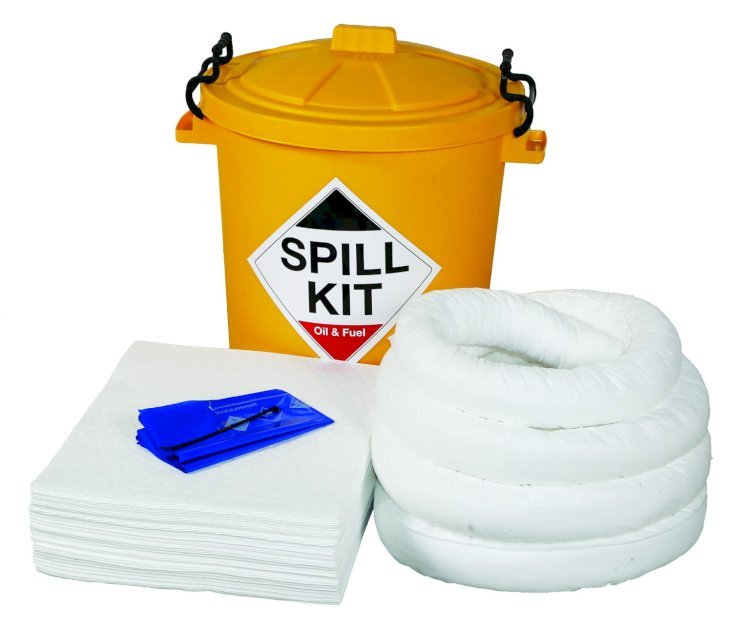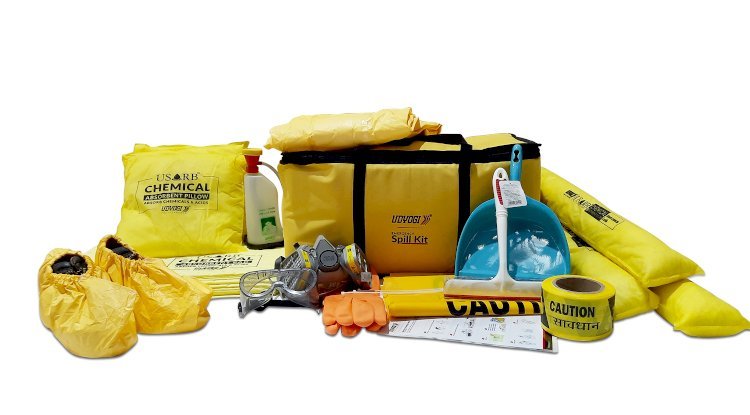Innovative Different Types of Spill Kits Ideas for Safety:

Spill Kits:
Spill kits are a crucial component of workplace safety, particularly in environments where hazardous materials are handled or transported. From factories to hospitals, warehouses to labs, these kits provide a fast and effective way to contain and clean up spills, protecting workers, the environment, and property. But as work environments evolve, so too must the tools we use. That’s where innovative spill kits designs and specialised types come in.
General-Purpose Spill Kits
Best For: Water-based and non-hazardous liquid spills (e.g., coolants, paint, food-based liquids)
These are the most common types of spill kits found in industrial, commercial, and educational facilities. General-purpose kits typically contain:
- Absorbent pads and socks
- Disposal bags
- Safety gloves
- Instruction sheets
Innovative Idea:
Create spill kits with colour-coded components for easy identification and include QR codes that link to multilingual clean-up instructions for quick and effective response. This makes training easier and speeds up emergency response across multilingual teams.
Oil-Only Spill Kits
Best For: Spills of petroleum-based products (e.g., engine oil, diesel, lubricants)
Oil-only kits contain hydrophobic absorbents that repel water and absorb oil. This makes them perfect for marine environments, construction sites, and automotive garages.
Innovative Idea:
Use bio-remediating absorbents that not only contain oil but also help break it down using microorganisms. Some kits even include reusable booms made from recycled materials, which are both eco-friendly and cost-effective.
Chemical Spill Kits
Best For: Hazards involving acids, bases, solvents, and unknown chemicals
These kits are designed for use in environments such as laboratories, chemical plants, and pharmaceutical facilities. They include:
- Absorbents resistant to aggressive chemicals
- Protective clothing (goggles, aprons, etc.)
- Chemical-neutralising agents
- pH test strips
Innovative Idea:
Incorporate smart labels that change color when they encounter specific types of chemicals. These can alert users to the severity of a spill and guide them to the appropriate PPE and response method.
Universal Spill Kits
Best For: Facilities where multiple spill types may occur
Universal spill kits combine the capabilities of oil-only and chemical kits, making them ideal for general use in facilities with mixed hazards. They’re great for warehouses, transport depots, and mixed-manufacturing sites.
Innovative Idea:
Add a modular insert system that allows users to customise the kit based on the specific zone or department, reducing waste and increasing relevance—for example, one insert for solvents, another for oils, and one for water-based fluids.
Marine and Outdoor Spill Kits
Best For: Coastal, boating, and fuel storage facilities
These kits are typically stored in waterproof containers or drums and are designed to float in water while absorbing hydrocarbons.
Innovative Idea:
Design marine spill kits with built-in solar-powered emergency lights integrated into their lids, providing illumination during nighttime spills or low-visibility conditions for safer and more efficient response. This helps responders locate the kit quickly in poor visibility conditions, especially valuable during storms or at night.

Vehicle Spill Kits
Best for: Business fleets, including commercial trucks, fuel delivery tankers, and mobile service vehicles.
These are compact, portable kits designed to fit under seats or in vehicle compartments. They’re vital for on-the-road businesses to manage minor oil or fuel leaks and spills quickly.
Innovative Idea:
Equip these kits with a GPS tracker and RFID tag to monitor stock levels and kit locations for large fleet managers. Opening a spill kit can trigger a notification to headquarters, alerting them to a spill incident.
Battery Acid Spill Kits
Best For: Facilities using forklifts, electric vehicles, or storing lead-acid batteries
Battery acid kits are designed to neutralise and absorb sulfuric acid and typically contain:
- Acid-neutralising absorbents
- PPE for handling corrosive material
- Acid-resistant brushes and dustpans
Innovative Idea:
Introduce interactive training apps linked to the kit’s barcode. These apps can guide users through step-by-step neutralisation and cleanup in real-time, ideal for high-risk facilities.
Personal Spill Kits
Best For: Laboratories, workshops, or field technicians
These are small, belt-mounted or backpack-sized kits meant for personal use. They allow workers to act immediately without needing to fetch a centralised kit.
Innovative Idea:
Develop wearable spill kits that feature integrated fold-out absorbent panels in aprons or sleeves, allowing personal protective equipment (PPE) to double as an immediate spill response solution.
What is a Chemical Spill Kit?
A chemical spill kit is a specialized safety kit used to control, neutralize, and clean up dangerous chemical spills in the workplace or laboratory environment. It typically includes absorbent pads, neutralizers, protective gloves, goggles, and disposal bags. These kits are essential in laboratories, factories, and workplaces where corrosive or toxic substances are managed regularly.
Final Thoughts:
Spill kits are not a one-size-fits-all solution. Different work environments require tailored kits with specific contents and features. With innovations such as QR training codes, smart sensors, modular inserts, and bioremediating materials, today’s spill kits are more innovative, safer, and more efficient than ever before.
By embracing both standard and innovative spill kit options, businesses can better prepare for emergencies, minimise environmental harm, and create a safer workplace for everyone.
What's Your Reaction?














